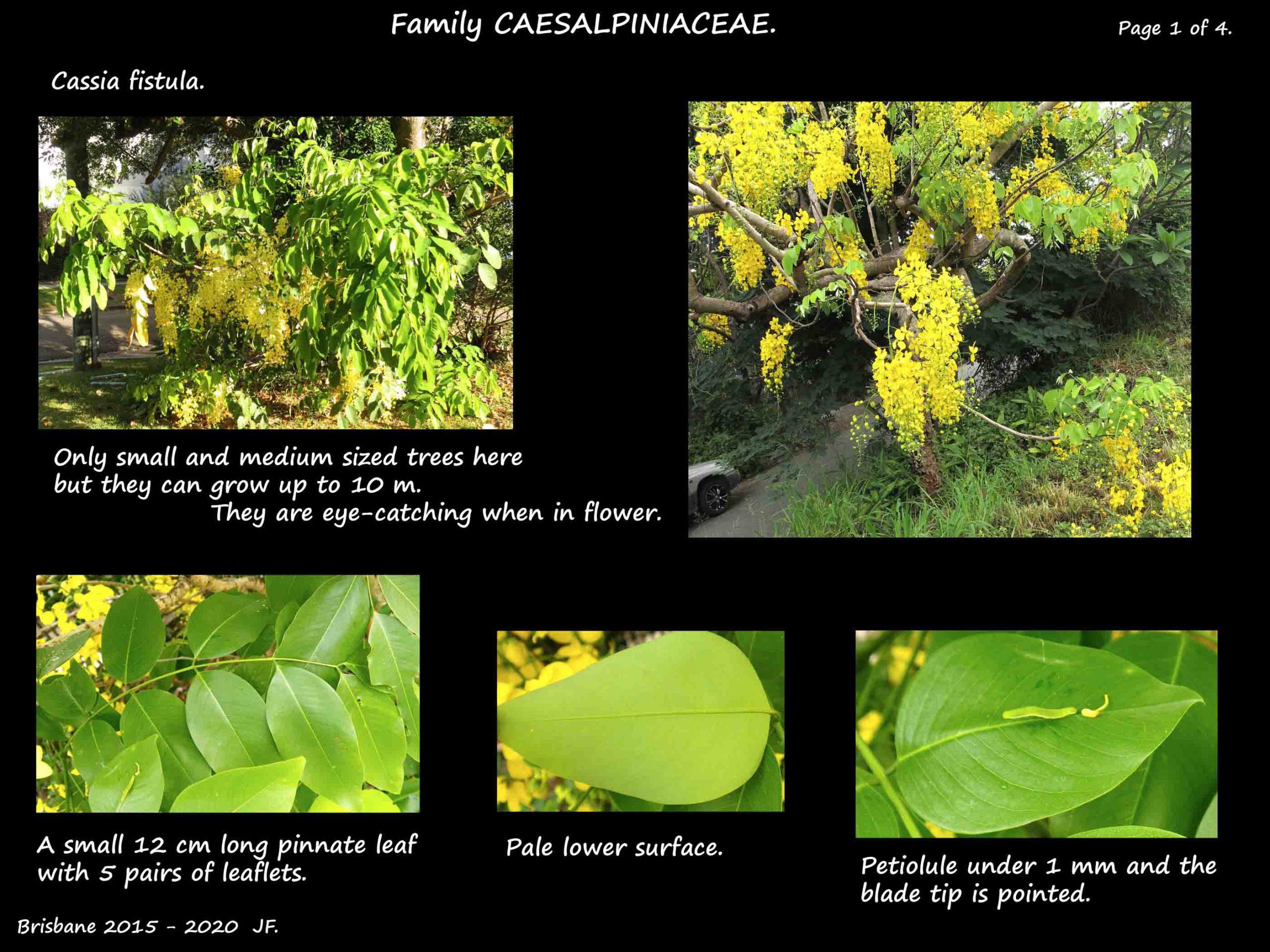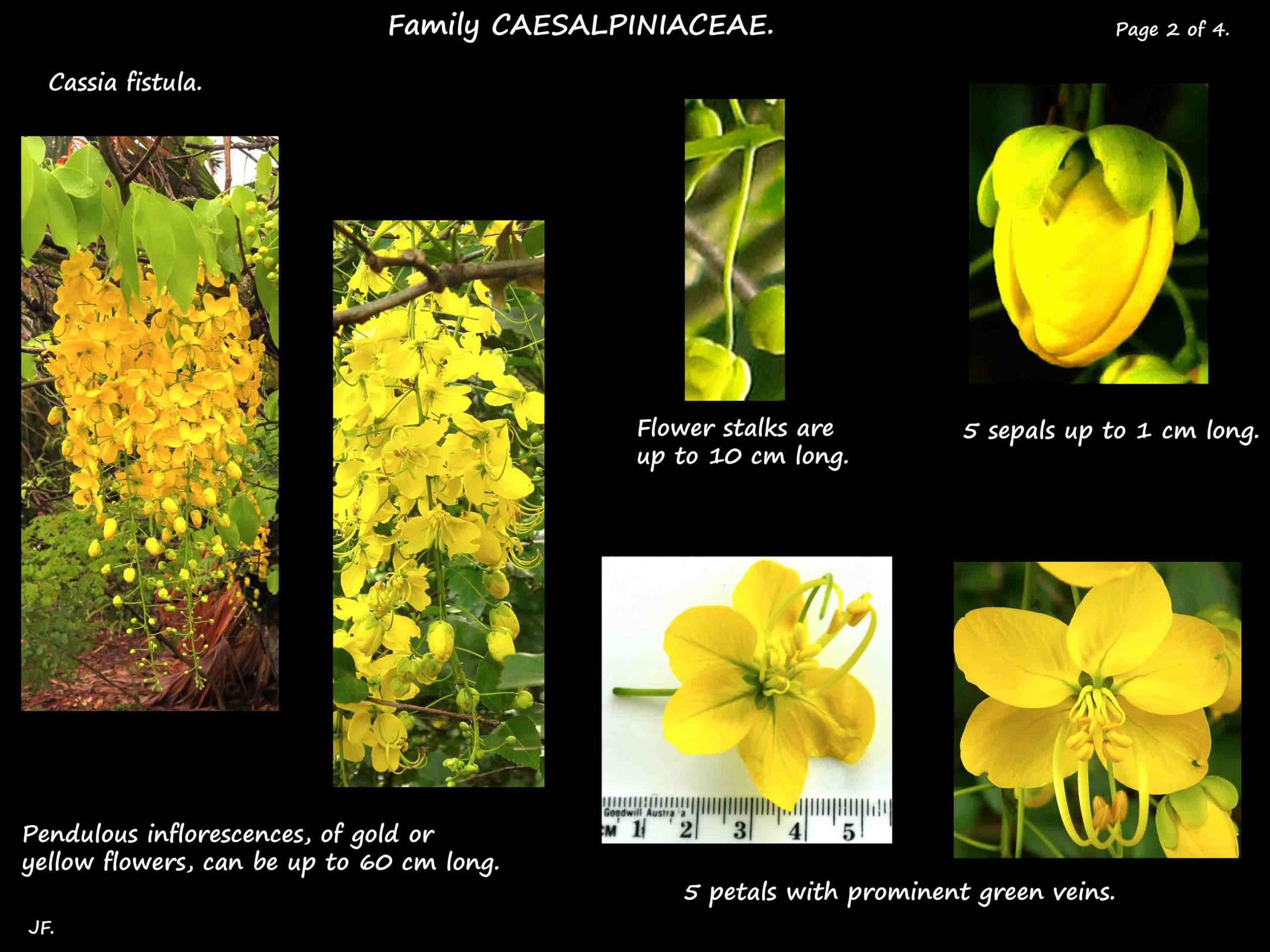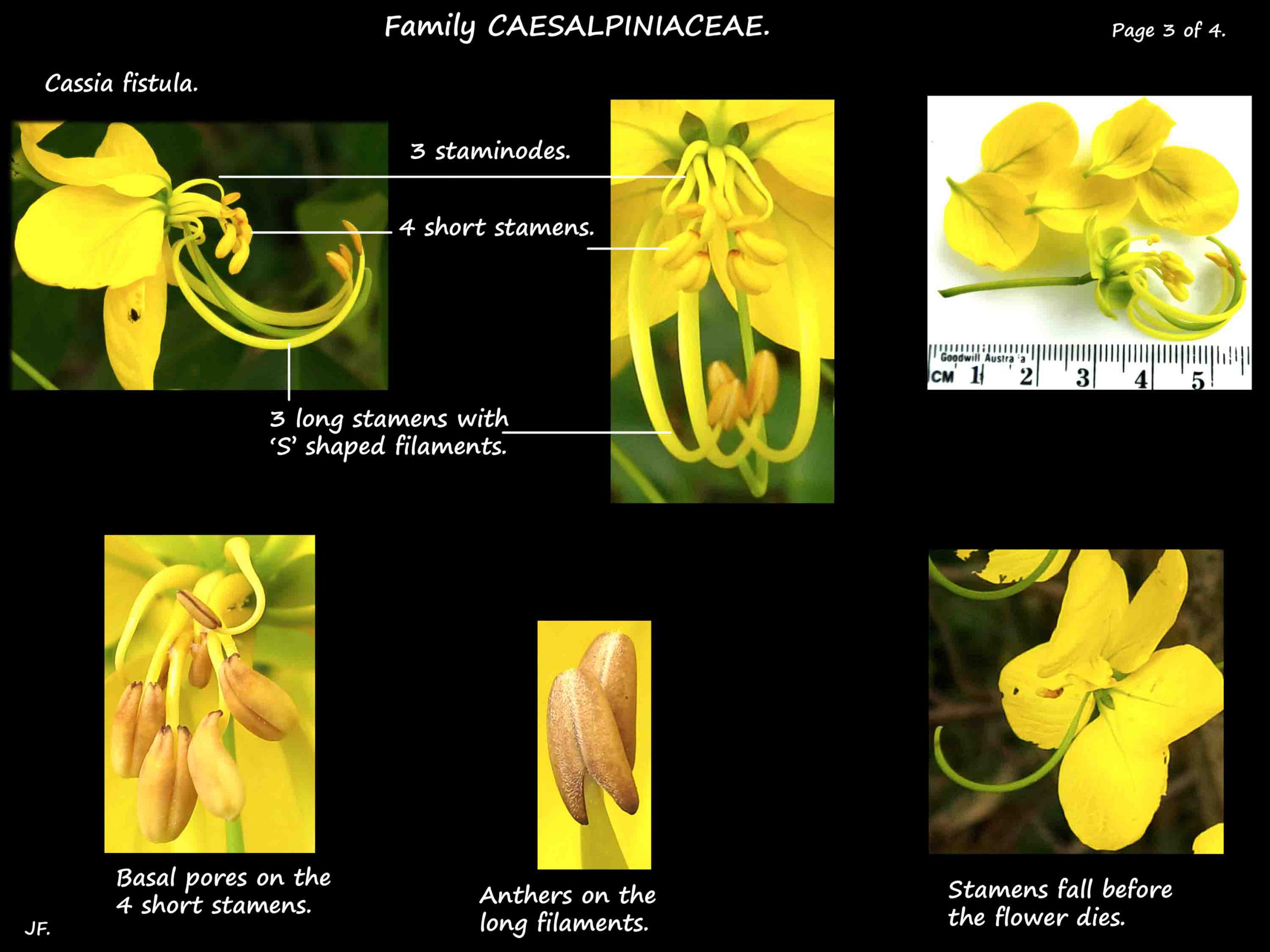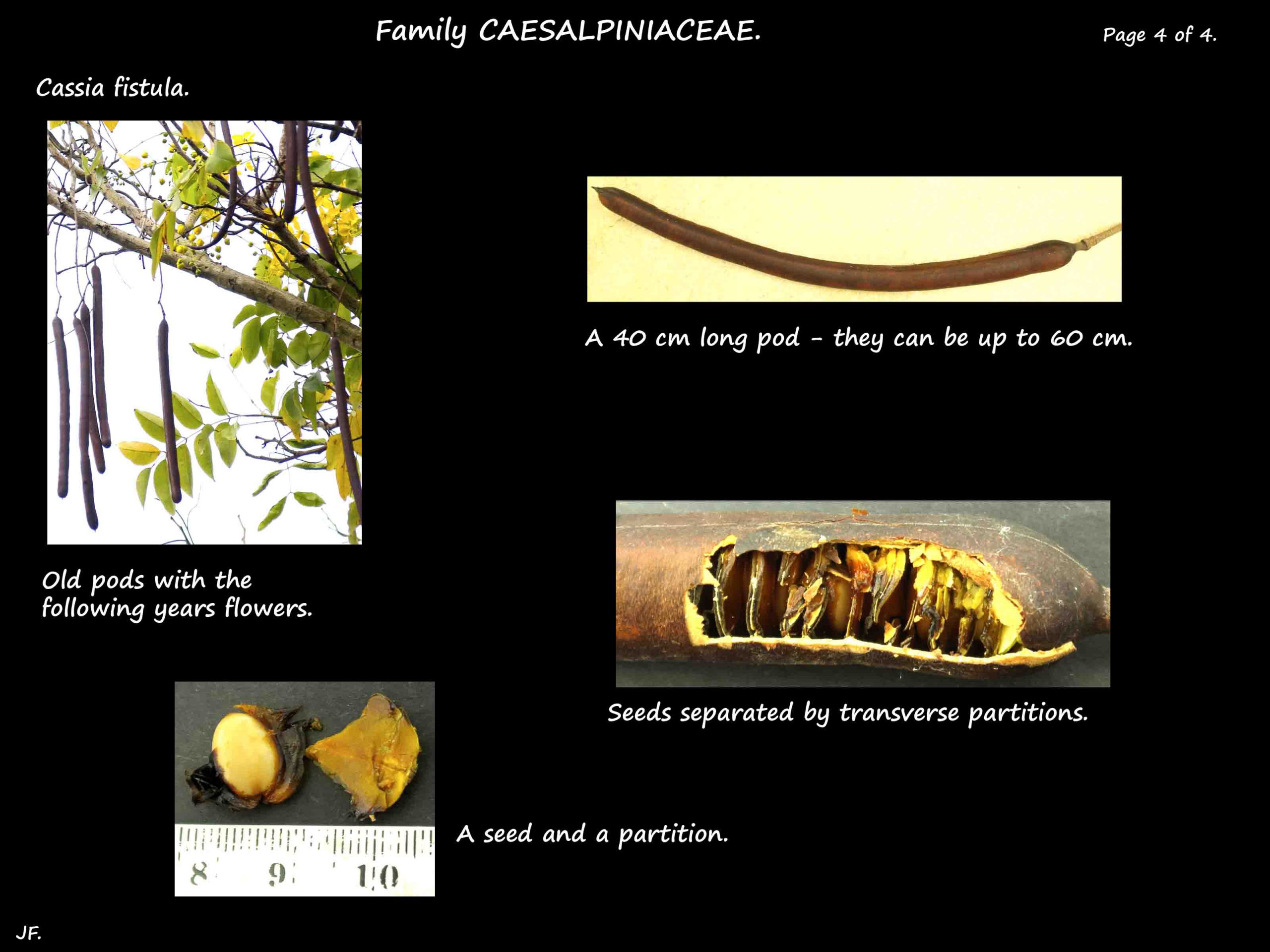Cassia fistula.
The Golden shower tree or Indian laburnum, is native to S.E. Asia and India.
Widely cultivated is has become naturalised, and a weed, in S.E. Queensland.
They are spreading trees mostly up to 10 m but can grow higher.
They are semi-deciduous loosing their leaves for a short time in winter.
The smooth, grey bark of younger trees becomes brown and fissured.
Young, green stems may have a few hairs.
The alternately arranged, pinnate leaves are from 15 to 50 or 60 cm long.
They are on petioles around 5 or 6 cm long.
Each leaf has 3 to 8 pairs of leaflets 7 to 15 or 20 cm long.
Petiolules are 0.5 to 1 mm long and the blades are oblong to elliptic with a pointed tip.
They are bright green with paler, slightly hairy undersides.
Inflorescences are pendulous spikes from 15 to 60 cm long.
Each is on a stalk or peduncle up to 10 cm long.
Each holds 20 to 70 or more bright yellow flowers up to 7 cm across.
There are 5 green sepals up to 1 cm long that bend backwards.
The 5 petals, 2 to 4 cm long, are all similar and have prominent veins.
There are 10 stamens in 3 sets.
The upper 3 are small infertile staminodes only 0.5 cm long.
There are 7 fertile stamens 4 of which are about 1 cm long.
The 3 lower stamens, 2.5 to 4.5 cm long, have ‘S’ shaped filaments.
The first curve, near the base, is tight and the second is long, curving down then upwards.
This brings the anthers to lie well outside the corolla.
There are no nodes on the filaments.
After fertilisation the stamens fall off.
The long, green, flattened ovary has a single style and stigma.
The fruit are hairless, indehiscent, cylindrical pods up to 60 cm long and 2.5 cm wide.
They stay on the tree for a year maturing to brown then black.
There are up to 100 seeds lying across the pod rather than along it.
The seeds are separated by transverse ribs.
The flat brown seeds, in a sticky pulp, are up to 1 cm long.
J.F.





